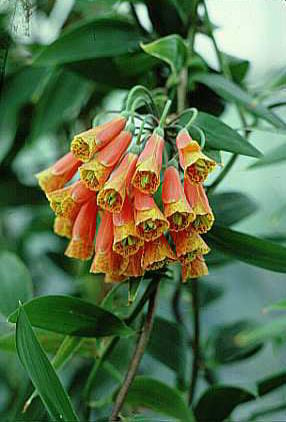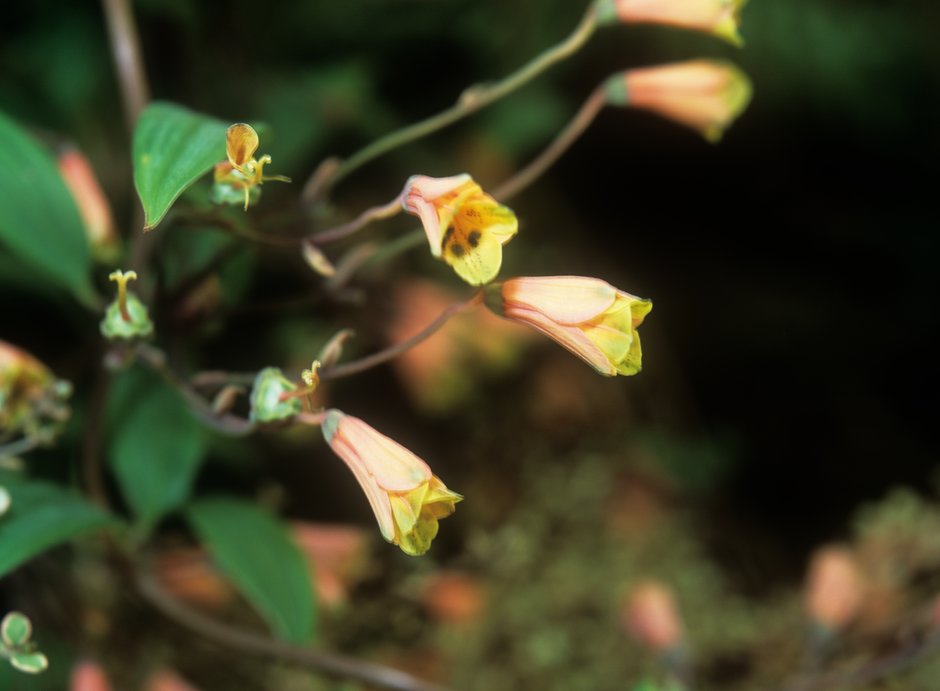Bomarea multiflora
trailing lily
A twining herbaceous climber to 3m, with narrowly oblong leaves and, from late spring, terminal umbels of orange and yellow, tubular or funnel-shaped flowers 4cm in length, spotted with brown within
Other common names
Caldos bomareaSynonyms
Bomarea caldasiiBomarea caldasiana
see moreBomarea multiflora subsp. caldasii
Bomarea oligantha
Bomarea frondea
Size
Ultimate height
1.5–2.5 metresTime to ultimate height
2–5 yearsUltimate spread
0.1–0.5 metresGrowing conditions
Moisture
Moist but well–drainedpH
Acid, Alkaline, NeutralColour & scent
| Stem | Flower | Foliage | Fruit | |
| Spring | Orange Yellow | Green | ||
|---|---|---|---|---|
| Summer | Orange Yellow | Green | ||
| Autumn | Orange Yellow | Green | ||
| Winter |
Position
- Full sun
Aspect
South–facing or West–facing
Exposure
Sheltered Hardiness
H2Botanical details
- Family
- Alstroemeriaceae
- Native to GB / Ireland
- No
- Foliage
- Deciduous
- Habit
- Climbing
- Genus
Bomarea are tuberous, deciduous twining perennials with simple, lance-shaped leaves and terminal umbels or racemes of tubular or narrowly bell-shaped flowers
- Name status
Correct
- Plant range
- South America
How to grow
Cultivation
Grow outdoors in moist but well-drained soil in full sun. Cut back dead growth and flowered stems to ground level in autumn. Under glass grow in peat-free, loam-based compost in full light with shade from hot sun
Propagation
Propagate by seed or division
Suggested planting locations and garden types
- Sub-tropical
Pruning
No pruning required
Pests
May be susceptible to glasshouse red spider mite
Diseases
Generally disease-free
Love gardening
Sign up to receive regular gardening tips, inspiration, offers and more
View our Privacy Policy
Get involved
The Royal Horticultural Society is the UK’s leading gardening charity. We aim to enrich everyone’s life through plants, and make the UK a greener and more beautiful place.

